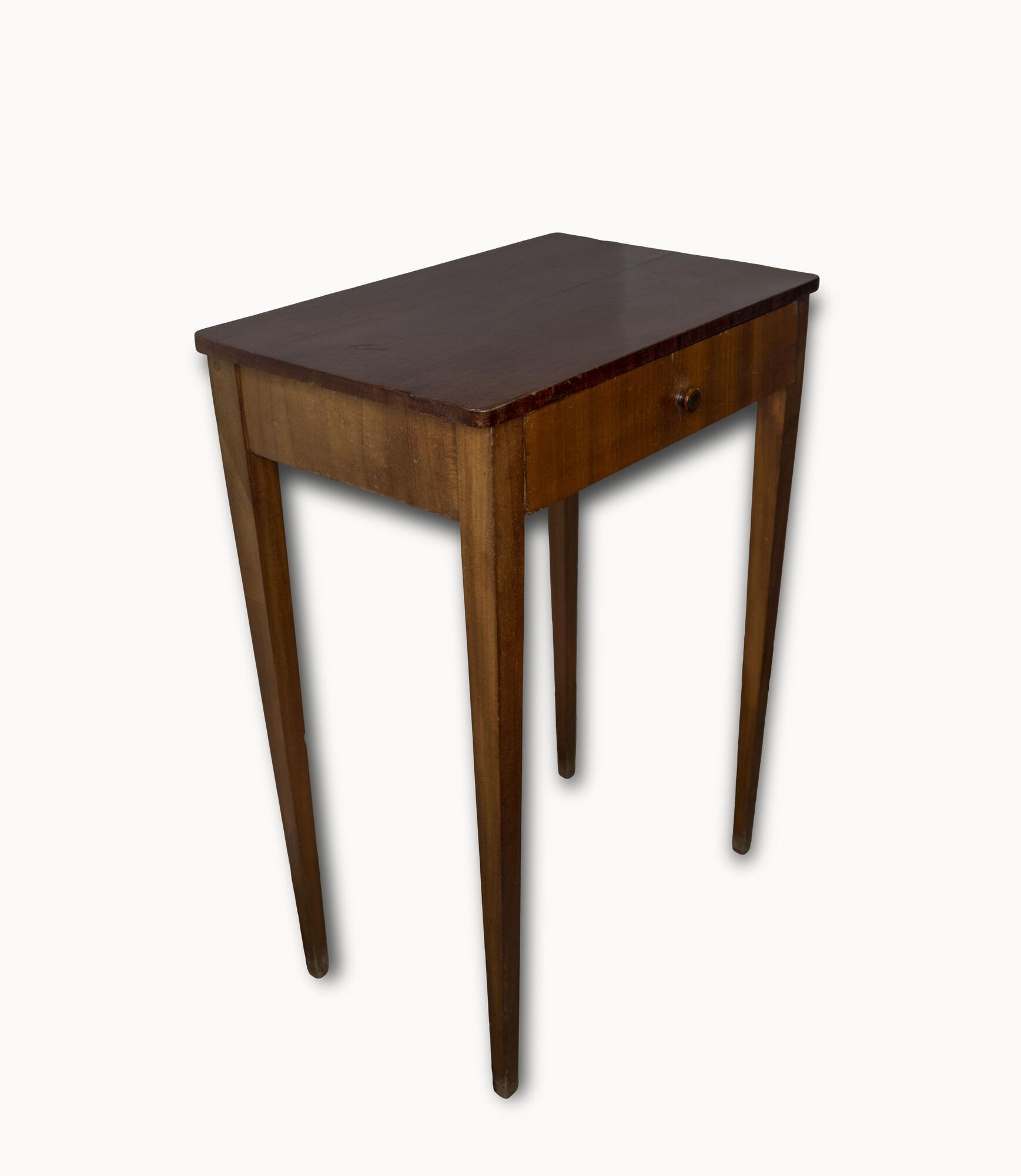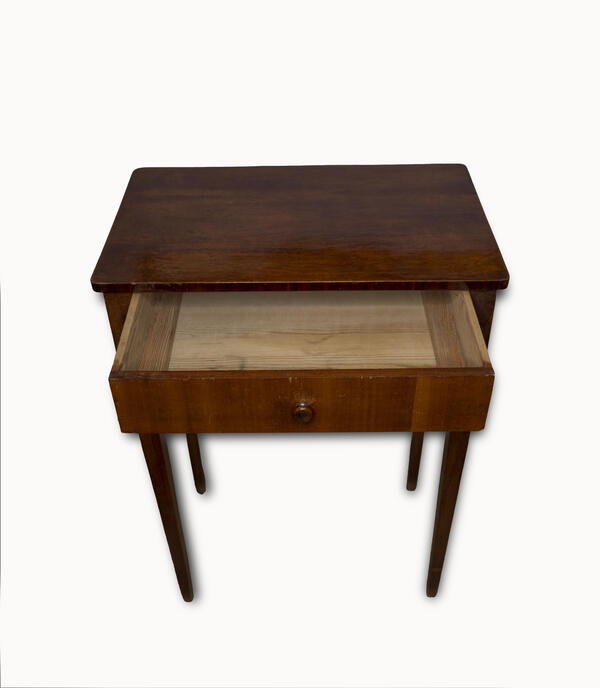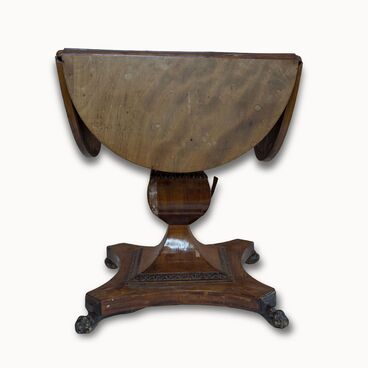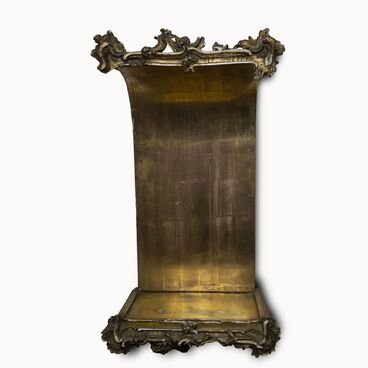The card table from the museum collection is called the “l’ombre table” — a small, elegant table used to play the French card game of ombre.
In Europe, playing cards was extremely popular among everyone, including children. There were card tables of different shapes, and the choice depended on the rules of a particular game. For example, for a game of ombre, where there were two players against one, a triangular table would be optimal.
In the 17th century, France enjoyed the popularity of the piquet card game, where there were only two players. A small table that had a tabletop with folding wings was invented to suit the game. Such tables were always symmetrical so that none of the players had an advantage over the other.
Tabletops covered with a dense green woolen cloth were first mentioned in the 17th century. It was convenient to make chalk marks on the cloth surface while playing. Over time, this feature became characteristic of all card tables, and green cloth grew to symbolize a game of cards.
In the 18th century, folding tables came into fashion: during the day, they served either as a place for needlework or a stand for vases of flowers or tea trays and in the evening, they were unfolded for playing cards. Small details were added with time, such as recesses for chips or special stands for candlesticks.
The Russian nobility learned about the ombre game only in the 18th century. However, it was Russia that developed and firmly established the concept of the “l’ombre table”, and every nobleperson in the country knew what that object was for.
Aristocrats ordered customized card tables. For a decent pay, they could count on the flight of fancy of woodworking craftsmen, who made card tables from precious woods and inlaid them with gold and precious gemstones.
Soon, card tables for playing ombre began to be used for other games as well. Sometimes their tabletop was decorated with a pattern of a playing field. For example, tables made for those customers that were avid chess players featured a tabletop with a chess field. In addition to their primary function, card tables were used for positioning tea, newspapers, magazines, and flower vases, and they also posed as interior design elements.
In Europe, playing cards was extremely popular among everyone, including children. There were card tables of different shapes, and the choice depended on the rules of a particular game. For example, for a game of ombre, where there were two players against one, a triangular table would be optimal.
In the 17th century, France enjoyed the popularity of the piquet card game, where there were only two players. A small table that had a tabletop with folding wings was invented to suit the game. Such tables were always symmetrical so that none of the players had an advantage over the other.
Tabletops covered with a dense green woolen cloth were first mentioned in the 17th century. It was convenient to make chalk marks on the cloth surface while playing. Over time, this feature became characteristic of all card tables, and green cloth grew to symbolize a game of cards.
In the 18th century, folding tables came into fashion: during the day, they served either as a place for needlework or a stand for vases of flowers or tea trays and in the evening, they were unfolded for playing cards. Small details were added with time, such as recesses for chips or special stands for candlesticks.
The Russian nobility learned about the ombre game only in the 18th century. However, it was Russia that developed and firmly established the concept of the “l’ombre table”, and every nobleperson in the country knew what that object was for.
Aristocrats ordered customized card tables. For a decent pay, they could count on the flight of fancy of woodworking craftsmen, who made card tables from precious woods and inlaid them with gold and precious gemstones.
Soon, card tables for playing ombre began to be used for other games as well. Sometimes their tabletop was decorated with a pattern of a playing field. For example, tables made for those customers that were avid chess players featured a tabletop with a chess field. In addition to their primary function, card tables were used for positioning tea, newspapers, magazines, and flower vases, and they also posed as interior design elements.





